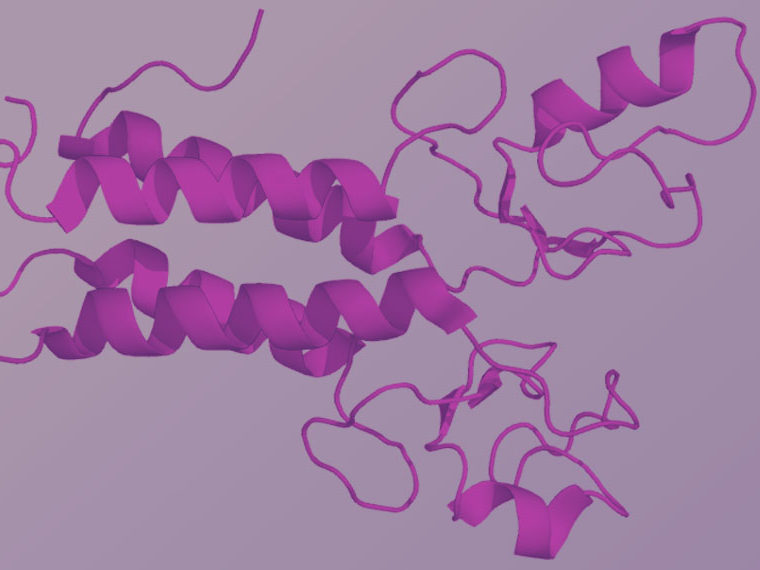Improving epidemic forecasting helps response teams target aid more effectively
In 2014, the first signs that an especially deadly Ebola epidemic might be brewing came on March 22, with reports of 49 cases in Guinea. By the end of August, the disease had spread to Sierra Leone and Liberia, bringing the total of likely, confirmed and suspected cases in West Africa to 3,685.
On September 23, 2014, the U.S. Centers for Disease Control and Prevention (CDC) announced a new modeling tool, called Ebola Response, to estimate the number and locations of future cases, and to construct aid scenarios that would eventually stop the epidemic. Without interventions, the number of infected people would double every 20 days and reach “extraordinary levels,” according to the Ebola Response forecast detailed in an accompanying academic paper. The model forecast between 550,000 and 1.4 million cases by January 20, 2015, without a concerted effort to stop the spread.
The authors of the CDC study, published barely six months after news of the first outbreak broke, noted several limitations to the Ebola Response tool. The first: Extrapolating (then) current trends to forecast all future cases might not be appropriate, the authors said, because spontaneous changes in travel or burial practices could alter future spread. Limiting model projections to shorter durations, such as three months, might be a better way of forecasting, the study noted.
Opt In to the Review Monthly Email Update.
With West Africa in full-blown crisis, aid directors acted according to Ebola Response recommendations. Its model scenarios suggested that isolating at least 70 percent of victims would be the most effective way to halt the virus’ spread. To this end, relief efforts focused on building Ebola treatment units in areas the model predicted would need them later.
But as the epidemic continued into roughly its 20th week and beyond, the virus did not spread with the same pattern or zeal that it did in the early months that were used to calibrate the Ebola Response models. What changed? Families canceled gatherings, transportation shut down and schools and workplaces closed, effectively narrowing or closing off entirely the avenues for viral spread. The number of cases in hot spots peaked quicker than expected.
The U.S. alone spent some $1.4 billion on relief efforts during the epidemic. Owing to inaccuracies in forecasts, much of it went to setting up Ebola treatment units that did not open until after the number of cases in those locations began to drop. Nine of the 11 units built in Liberia with U.S. aid never saw a single Ebola case during the epidemic, according to news reports.
By the end of the epidemic in early 2016, a total of 28,600 people had contracted Ebola in West Africa. Of those infected, 11,300 died. Preventive measures taken in communities, often without official aid, kept the victim numbers mercifully short of the 1.4 million worst-case projection.
A Better Forecast, a Quicker Resolution
When an infectious disease outbreak threatens mass sickness or death, accurate forecasts of contagion spread are key to keeping isolated occurrences from turning into widespread epidemic. Without them, resources are sent to the wrong locations and wasted.
A study forthcoming in the journal Manufacturing & Service Operations Management describes a new model that appears to provide much more accurate forecasts of contagion spread, as well as better guidance for effective aid deployment. In part by addressing some of the limitations noted in Ebola Response, the new model stands to greatly improve chances of bringing contagion under control in the early phases of disease outbreak. By iteratively pairing short-term spread forecasts with an allocation plan that adapts to the changing predictions, the model allows aid workers to see, as the crisis evolves, where medical personnel, equipment and treatment supplies should be distributed to offer the best chances of cutting off the epidemic.
The study’s authors, UCLA’s Anderson’s Elisa Long, and Eike Nohdurft and Stefan Spinler from the Kühne Institute of Logistics Management at WHU in Germany, test and demonstrate the model’s capabilities using data available in the early weeks of the 2014 Ebola outbreak.
The model produces forecasts very close to eventual reality in both the number of cases and the geographic direction of the contagion’s spread, according to the study. Rather than forecast months into the future, where predictions grow less and less accurate, the model design allows for quick and constant updates to short-term forecasts. Its forecasts improve over time as more data are collected.
Using four weeks of data from September 2014, for example, the model produced epidemic projections for the following four weeks with an aggregate error of only 4 percent, relative to the actual number of cases that occurred over this period. With 16 weeks of training data, the aggregate error decreased to less than 1 percent.
The researchers also offer a more effective plan for deploying resources based on the early forecasts, devising an allocation model that balances the needs in regions already in full-blown crises with those in yet-to-be-hit locations that are particularly vulnerable to infection. Using beds in Ebola treatment units as a quantifiable measure (beds are deployed with medical personnel and other resources), the study finds that aid allocated and reassigned frequently with updated forecasts can avert significant numbers of cases. The model’s allocations bring the contagion under control more quickly than the system used in the 2014 outbreak, even when data and resources are rather limited.
In one scenario that mimics the first 28 days of outbreak, assigning only 20 new beds per week to specified regions averts 23 percent of new cases. Long calls this a great result, especially since it relies only on the limited number of beds that were available at the time. “By allocating beds in a smarter fashion, a lot of cases could have been prevented, even using the imperfect data we had available at that time,” she said in an interview. “Ideally, we would like to increase the number of available resources to maximize the net impact.”
With 16 weeks of outbreak data, the same number of bed allocations can avert 86 percent of new cases, according to the findings. The giant leap in success of intervention at 16 weeks comes from the additional data collected over time, Long explained. For example, the data at four weeks into the epidemic did not predict the late outbreak of disease in Kono, Sierra Leone. Based on that early forecast, no resources would go there. But the model does pick up on a rapid increase in cases at 16 weeks, and it would have identified the need for more beds there earlier than the traditional model did.
The model stands to improve aid responses during an emerging outbreak of any rapidly spreading infectious disease about which data on cases are periodically reported, including Zika and influenza. With parameters that evolve over time to meet changing behavior on the ground, short forecast windows to reduce error rates, and an aid deployment strategy selected for optimal efficacy, the model offers a much-needed tool for predicting and getting ahead of disease.
People Adapt, So the Model Does, Too
The forecasting improvements in the new model result from the inclusion of data related to two variables that the CDC models did not effectively incorporate in 2014: changes in human behavior and geographic distance from other highly infected populations. Both factors are known to greatly affect disease spread but have been tricky to build into epidemiology models.
Behavioral changes by the people living in or near outbreaks — precautions that vary from changing burial rituals to families isolating themselves in their own homes — were key reasons that the 2014 epidemic did not become a worst-case scenario, according to follow-up studies. The new model accounts for people’s reduction in travel and their taking steps to avoid infection as the threat of disease near their own homes grows.
Logically, distance from outbreaks is a great predictor of where the disease will spread. But traditional epidemiology models often fail to adjust infectivity patterns based on geographic distance. They typically rely on data collected at the country level, which can lead to similar epidemic forecasts for a region hundreds of miles away from an outbreak and one right next door. The shortcomings of this approach have been highlighted in several studies about what went wrong in the 2014 response.
The new model fine tunes this risk factor by breaking down the country data into smaller regions, and then applying data from a third nearby region, Long explained. “For example,” she said, “if we know the number of past cases in Port Loko and Moyamba, then we can better predict the number of future cases in both of these regions and in nearby Tonkolili.” Tonkolili sits between Port Loko and Moyamba, two regions of Sierra Leone that were very hard hit by the 2014 epidemic.
The researchers discovered that incorporating either behavior or distance factors (but not both) in the model using the early 2014 data did not always improve predictions about where or how hard Ebola would hit next. In fact, occasionally error rates (the difference between the model’s forecast number of cases and the actual number of cases that occurred) were lower in specific regions if either factor was ignored, as illustrated in this map. Hover over any location to see the forecast error rates without behavior calculations and, separately, without distance effects.
But the calculations including both variables, seen as the new model on the map, almost always improved forecasts. The model projections here total 9,436 cases of Ebola for the period in the 21 regions. For the projection period, actual cases totaled 9,480.
Note that the accuracy of the model predictions varies greatly by region. The authors cite several issues that continue to plague disease forecasting generally and also affected these results. For example, Montserrado, Liberia, was a hotspot during the outbreak, but cases at the time were grossly underreported. The forecast error rate there drops to 1 percent from almost 70 percent with more accurate data, according to the study. The forecasts tend to be most accurate in places with high numbers of infections, such as Port Loko, Sierra Leone.
Pegging Tomorrow’s Outbreak for Today’s Aid
Resource allocation during epidemic crises has always been tricky and controversial. On the one hand, aid workers are desperately needed in places where the outbreak has overwhelmed health care systems and masses of people are ill. On the other, shutting down the epidemic is much more likely if resources are in place — aid workers are on the ground to inform people about precautions and to treat and isolate the sick, for example — before disease breaks out. Ideally, policymakers must reallocate resources over and over again as an epidemic spreads, with little standard protocol or evidence of where disease will break out the next month to guide in those decisions.
To find an effective deployment protocol, the researchers developed three new models for resource allocations that incorporate their forecasting model. These approaches differ in how they prioritize areas — one allocates resources only to areas expected to experience the most illnesses for the longest time, for example, while another spreads out resources to more regions — as well as technical factors involving how and when calculations and allocations are made. With early data from the 2014 Ebola outbreak and actual cases and locations for comparison, they could see which protocol would have been most effective in stopping disease progression across the continent. They compared the different strategies for resource allocations under a variety of data and budget constraints.
They found that a flexible allocation policy that covers both hotspots and areas expected to see future cases to be most effective in curtailing spread. This policy averted more cases than other strategies, including one that assigns all resources to ongoing outbreak areas, even in the early weeks of outbreak when data are sparse, according to the study.
Epidemic forecasting models do not typically include allocation recommendations based on their predictions. This model offers research-based guidance that has been particularly lacking in Ebola outbreaks, where relief efforts have been further complicated by disagreements among aid sources on priorities and tactics. The model can be adapted to include better forecasting factors as they are discovered, as well as extensions to other diseases.
A critical novelty of the most effective approach, known as a myopic linear program, is its shorter forecast and planning period. Allocations are assigned for only four weeks out, then reassigned based on new forecasts that include the updated behavior and distance factors.
The shortened time frame reduces error rates, and resources shift systematically to central, more accessible and connected locations in each country. For example, the model assigns limited resources first to centralized Moyamba, Sierra Leone, before putting any in isolated Conakry, Guinea, even though Conakry has twice as many cases.
Other allocation strategies reduced potential cases, but not as much as the myopic linear approach, the study finds. These include a protocol that prioritizes resources to hotspots but ignores places likely to see future outbreaks, as well as one that assigns more egalitarian distributions over longer time frames.
Help for Zika Prevention
The model could be adapted for forecasting other disease outbreaks. For example, safe burial practices are an important component for the model in an Ebola analysis but not for modeling Zika. For Zika, the model might include mosquito control efforts or precautions taken to delay pregnancy as a key behavioral change during an outbreak.
The model also can be adjusted to suit the different types of resources. While the study uses beds in Ebola treatment units as the primary resource for optimization, this could be personnel, vaccinations or any specific aid to be doled out for curtailing disease.
On May 8, 2018, the Democratic Republic of the Congo declared an outbreak of Ebola in three rural areas. Days later, a case was confirmed in Mbandaka, a city of about 1.2 million people, setting off fears of rapid spread in the days ahead. This time, the aid includes an experimental vaccine. World health officials were hopeful that the vaccine can prevent an all-out epidemic, if deployed to the right places.
Featured Faculty
-
Elisa Long
Associate Professor of Decisions, Operations, and Technology Management
About the Research
Long, E.F., Nohdurft, E., & Spinler, S. (2018). Spatial resource allocation for emerging epidemics: A comparison of greedy, myopic, and dynamic policies. Manufacturing & Service Operations Management. Advance online publication. doi: 10.1287/msom.2017.0681






